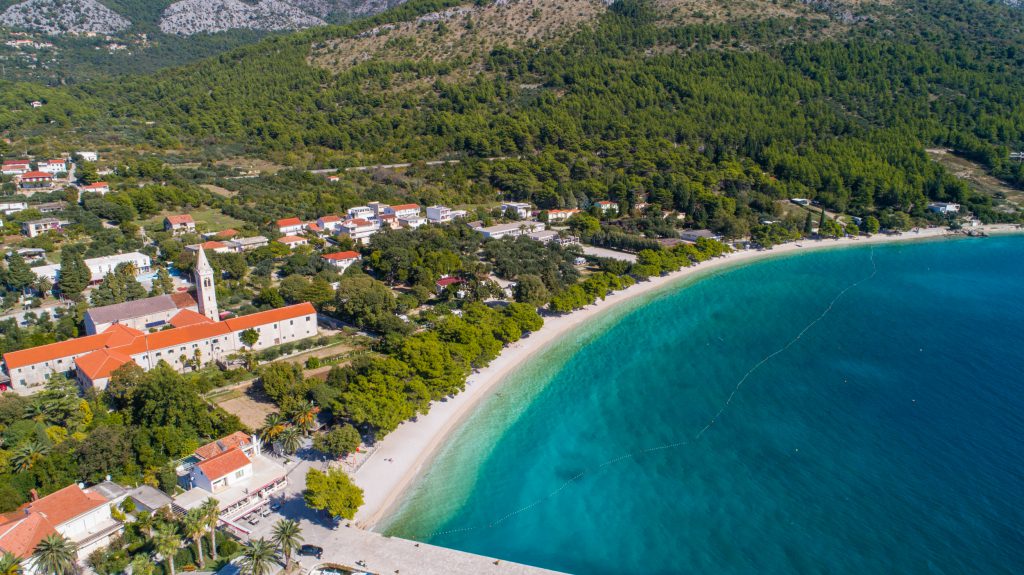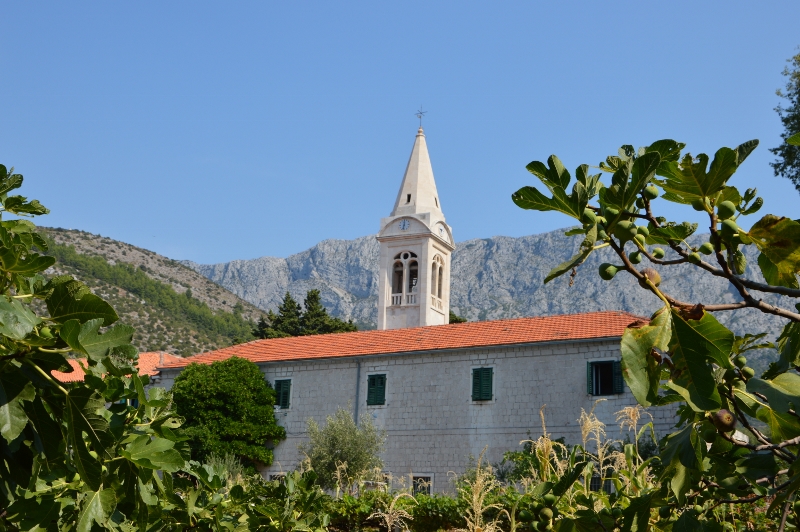Apartments Mila are located in Zaostrog, a small village on the Makarska Riviera, which is characterized by tranquillity and exceptional beauty of nature. The apartments are located in a family house just 70 meters from the sea. There are 14 exquisitely furnished suites with terraces and private parking.

Zaostrog
Zaostrog (Croatia, Central Dalmatia) is a town on the Makarska Riviera, around 30 km away from Makarska. It was mentioned for the first time in 1494, but there are still traces of human habitats since prehistoric times.
Nowadays Zaostrog is a tourist attraction at the south of Makarska Riviera fully oriented towards tourism. It has over 350 inhabitants mainly employed in the tourism and service industry. The town has over 3 000 beds in private accommodation (mainly apartments) and 100 places in auto camp “Viter”. Located in the emerald valley, surrounded by the slopes of Biokovo and with its gorgeous beaches, Zaostrog is an ideal destination for a vacation.

HISTORY
Zaostrog is first mentioned in 1494, but there are signs of human habitation dating back to prehistoric times. A few artefacts from the early Iron Age were found at the Viter mountain above Zaostrog in 1953. Zaostrog was also populated in Illyrian times, whose necropolises are all around the countryside. During the Roman empire, Zaostrog had a lively cultural scene, which is indicated by many artefacts, carvings of flute players and dancers in traditional garb, carvings of god Mithras and few tombstones.
After the arrival of Croatians in the 7th century, the town is called Ostrog, and it is mentioned in 950 by the Byzantine ruler Constantine as one of the four fortified towns of the Duchy of Neretva. Medieval Ostrog was situated up in the hills beneath Mali Viter, after in the north of the nearby plains beneath the hill Šapašnik a new settlement was founded, situated northwest of the one Constantine mentions and that settlement was named Zaostrog. In the 15th century, feudal lords of Zaostrog were Croatian nobles, brothers Vlatkovići – Jurjevići, which had fortified the town close to Viter.

MONASTERY
The largest cultural monument of the area is the Franciscan monastery of St. Marija. It was founded in the 14th century by the monks of St. Augustin, who left it after the fall of Bosnia in 1463 and went to the islands. The abandoned monastery was populated by the Franciscans from Bosnia who maintain it to this day.
Franciscans renewed the monastery, during the difficult times under the Turks. In 1640 according to the dignitary from Rome it was said to be the most beautiful of all monasteries in the area. One of its peaks is the stone tablet over the church gate which was written in Croatian and script dates from 1589. After being liberated from the Turkish rule the monastery had its Golden age in the 18th century.
In 1700 the monastery had a usual square shape with the cluster in the middle, in the 18th century it was expanded with two additional wings to the south and the west and in 1874 also to the east. The expansion was needed due to the expanding religious and educational role of the monastery and the Franciscans in it.